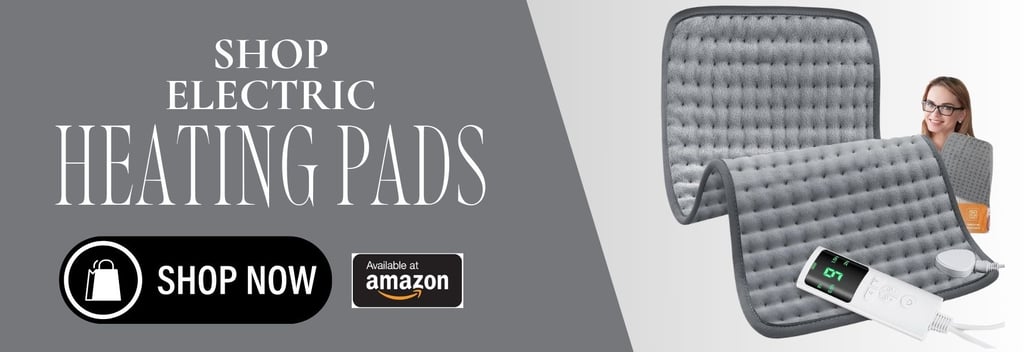DIY Heat Therapy Options for Comforting Endometriosis Cramps at Home
Struggling with endometriosis pain? These DIY heat therapy options offer comforting ways to support your self-care needs right at home.
HEALTH & WELLNESS
Shari Smith
2/21/20257 min read
As an Amazon affiliate, we earn commissions at no extra cost to you if you click our links and make a purchase.
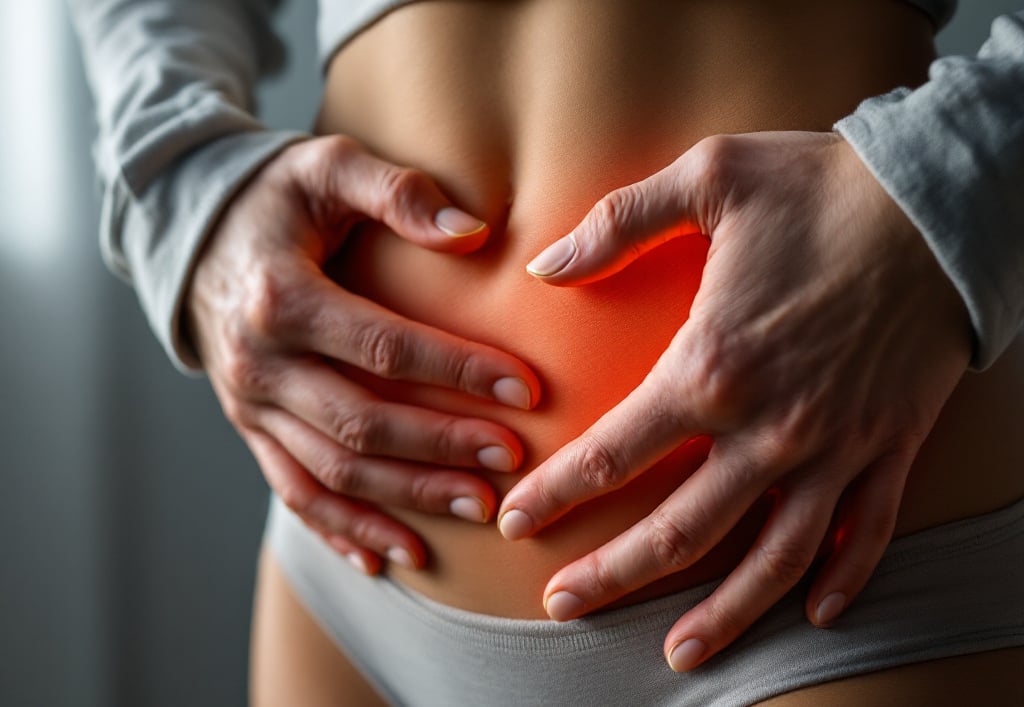

Living with endometriosis is a journey that can feel isolating, overwhelming, and exhausting. I know because it’s something I endured for over 32 years. The chronic pain, heavy periods, and infertility — all of it shaped a significant part of my life. By the time I reached 55, I had undergone multiple surgeries and countless treatments, and while some provided temporary relief, the pain always found its way back. To this day, I carry that understanding with me. If you’re reading this because you’re struggling with endometriosis, know that you’re not alone.
Over the years, I’ve discovered small ways to make life more bearable during the toughest days. One such remedy? Heat therapy. It’s simple, accessible, and surprisingly effective when it comes to soothing the relentless cramps that accompany endometriosis. Today, I’m sharing some practical DIY heat therapy options that you can try at home to ease your discomfort in a safe, empowering way.
Understanding Endometriosis and the Role of Heat Therapy
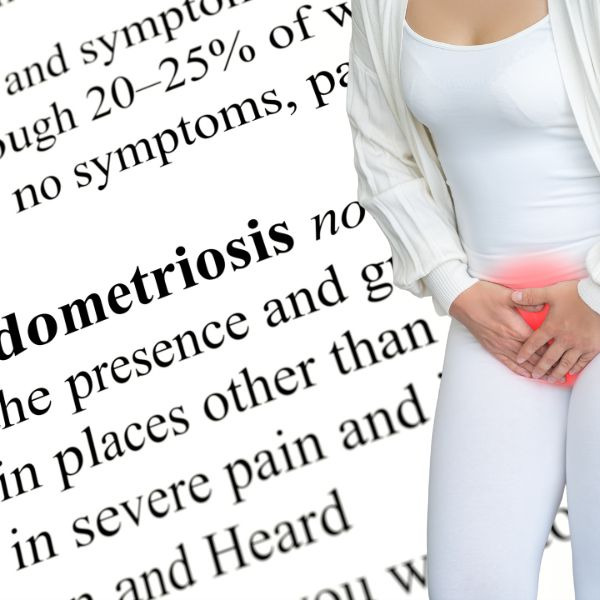

Endometriosis affects millions of women, yet its impact is often misunderstood or overlooked. Let’s talk about what’s happening in your body and why something as simple as heat can bring a measure of relief.
What is Endometriosis?
Endometriosis occurs when tissue similar to the lining of your uterus grows outside of it — on your ovaries, fallopian tubes, or even other pelvic organs. These misplaced tissue patches act just like your uterine lining, breaking down and bleeding during your menstrual cycle. But unlike your period, this blood has nowhere to go, leading to pain, inflammation, and sometimes adhesions or scar tissue.
The symptoms can vary, but for many, they include:
Intense menstrual cramps
Chronic lower back or pelvic pain
Heavy periods or irregular bleeding
Pain during sex
Fertility challenges
Living with endometriosis is more than just a physical struggle. Pain has a way of seeping into your daily life, affecting your energy, mood, and emotional health. It’s a constant companion, and finding reliable ways to manage it is essential.
How Heat Therapy Helps with Cramps
So, why does heat work? Think of it like this — when your muscles are tight and aching, applying heat feels like an instant release. That’s because heat increases blood flow, delivering oxygen and nutrients to the affected area while flushing out waste products that contribute to inflammation. It also relaxes muscles, reducing the severity of uterine contractions that cause cramping.
Scientific studies back this up, showing that heat therapy can provide pain relief comparable to some over-the-counter medications. For endometriosis sufferers, that’s a valuable tool in an otherwise limited arsenal.

DIY Heat Therapy Techniques for Managing Endometriosis Pain
You don’t need expensive gadgets or complicated setups to feel the benefits of heat therapy. Here are some affordable, easy-to-do ideas that you can try in the comfort of your own home.
Homemade Heating Pads
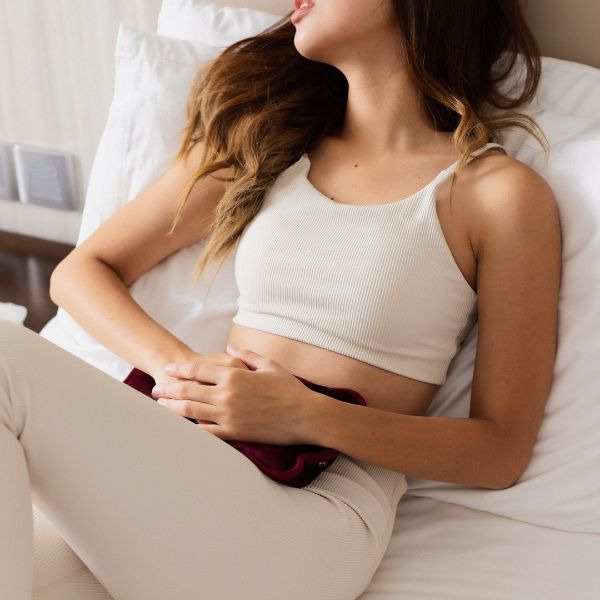

Making a heating pad at home is simpler than you might think. Here’s a quick step-by-step guide:
Gather materials: You’ll need a clean sock or a thick cloth bag, some uncooked rice or dry beans, and a microwave.
Fill the sock or cloth: Pour the rice or beans into it, leaving a little room so it’s flexible. Tie off the open end or secure it with a knot.
Heat it up: Microwave the sock for 1-2 minutes. Check the temperature to make sure it’s warm but not too hot.
Use as needed: Place it on your lower abdomen for quick relief. The pad should stay warm for 20-30 minutes.
These DIY pads are reusable and perfect for last-minute cramp attacks.
Using Hot Water Bottles
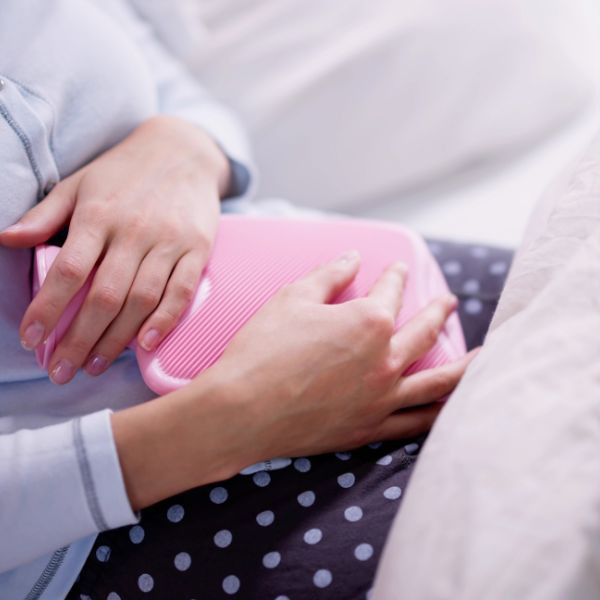

Hot water bottles are a classic remedy for menstrual pain, and for good reason. They’re easy to use and deliver targeted heat exactly where you need it.
How to use: Fill the bottle with hot (not boiling) water and wrap it in a towel or cloth to protect your skin. Place it on your abdomen or lower back for up to 20 minutes.
Pro tip: If you don’t have a hot water bottle, a sealed plastic water bottle filled with hot tap water can work in a pinch.
Warm Baths and Showers


For full-body relief, few things compare to soaking in a warm bath. The heat penetrates deep into your muscles and joints, helping you relax on a physical and emotional level.
Bath tips: Add Epsom salts for added muscle relaxation or a few drops of essential oils like lavender for a calming touch.
Shower alternative: If you don’t have time for a bath, standing under a hot shower and directing the water toward your lower abdomen or back can provide almost immediate relief.
Electric Heating Pads
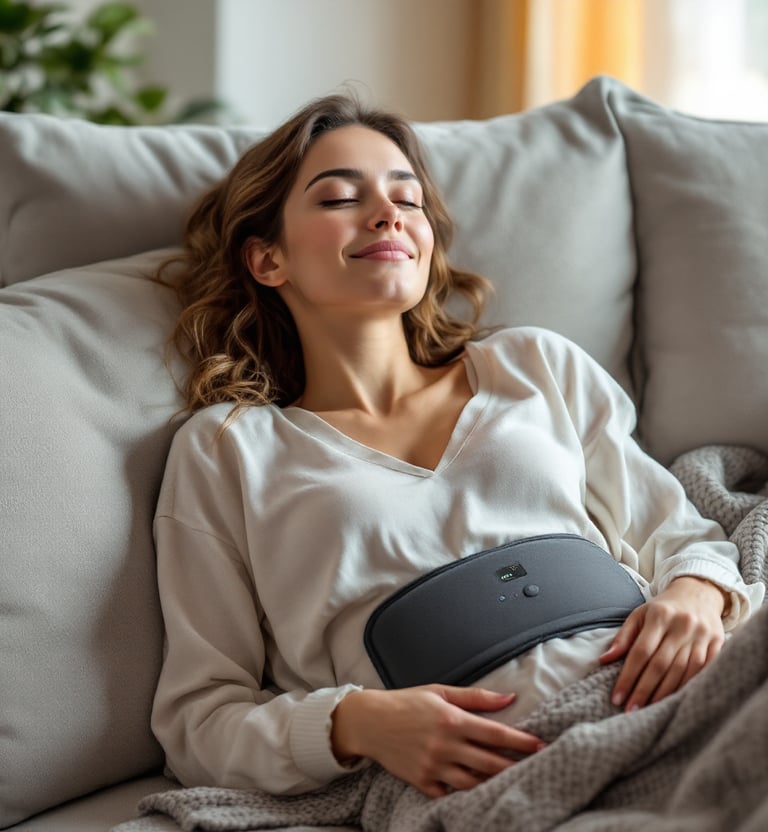

If you prefer convenience, electric heating pads are an excellent option. They’re adjustable, portable, and often come with auto-shutoff settings for safety.
Usage tips: Always follow the manufacturer’s instructions, and avoid falling asleep while using the pad. Choose a comfortable heat setting and limit sessions to 15-30 minutes.
Important Safety Tips for Heat Therapy
While heat therapy is generally safe, it’s essential to use it responsibly to avoid unwanted side effects.
Avoiding Excessive Heat
It might be tempting to crank the temperature, especially when pain is at its worst, but too much heat can cause burns or irritation. Aim for a warm, comfortable temperature, and always use a barrier (like a cloth) between your skin and the heat source.
Time Management for Heat Application
Heat therapy works best in short bursts. Stick to sessions of 15-30 minutes to prevent overheating or skin sensitivity. If your pain persists, take a break and try again later.
When to Consult a Doctor
While heat therapy can reduce mild to moderate cramps, it’s not a cure. If your symptoms are severe or getting worse, or if you’re experiencing new, unusual pain, don’t hesitate to reach out to a healthcare provider.
Additional Self-Care Practices Alongside Heat Therapy
Heat therapy works best as part of a broader self-care routine. Here are a few complementary strategies to consider.
Gentle Exercises
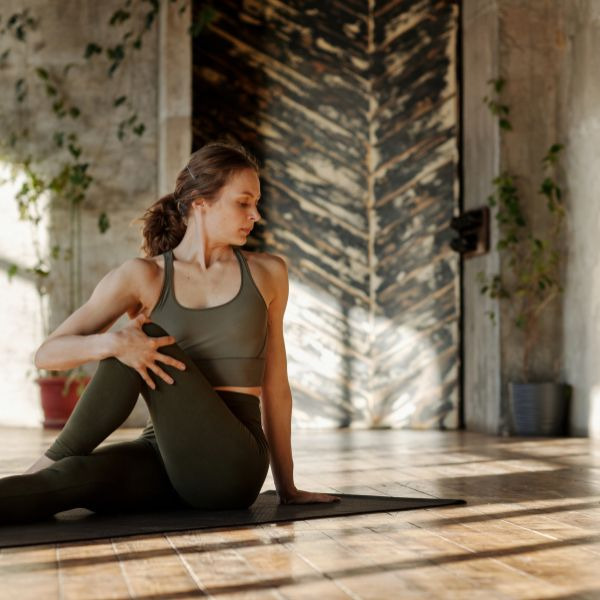

Low-impact activities such as yoga, stretching, or walking can improve blood flow and release tension in your pelvic area.
Movement may seem challenging when you’re in pain, but engaging in low-impact exercises can improve circulation, ease muscle tension, and support pelvic health. Activities like yoga, stretching, and walking encourage blood flow to the abdominal area, helping to reduce inflammation and discomfort.
Even just 10-15 minutes of movement a day can make a difference. Listen to your body and choose movements that feel good. Yoga poses such as child’s pose, reclining bound angle pose, and gentle spinal twists can be particularly helpful for relieving tension in the lower abdomen and back. Walking at a comfortable pace, especially outdoors, can also promote relaxation and provide a mental reset.
Mindfulness and Relaxation Techniques
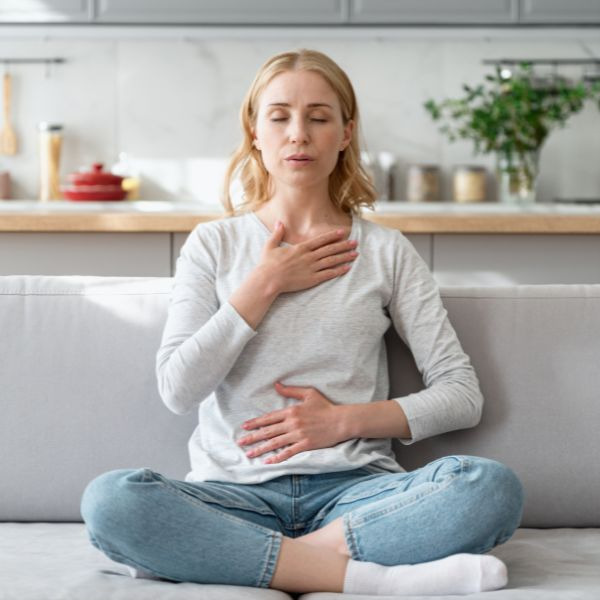

Pain and stress are deeply connected—when one increases, the other often follows. Mindfulness practices can be powerful tools to help you break this cycle, creating a sense of inner calm even on difficult days.
Meditation: Taking a few minutes each day to sit quietly and focus on your breath can help you feel more centered. Guided meditations specifically designed for pain management can be especially effective.
Deep Breathing: Techniques such as diaphragmatic breathing (belly breathing) or the 4-7-8 method (inhale for four seconds, hold for seven, exhale for eight) can signal your nervous system to relax and reduce tension.
Progressive Muscle Relaxation: This involves tensing and then slowly releasing different muscle groups in your body, helping you become more aware of areas holding stress and allowing them to soften.
Taking a few moments throughout the day to pause, breathe, and reset can help ease both physical and emotional discomfort.
Dietary Adjustments Techniques


What you eat can have a significant impact on inflammation, hormone balance, and overall well-being. A diet rich in anti-inflammatory foods can help support your body and potentially reduce endometriosis-related pain.
Nourishing choices: Include leafy greens (such as spinach and kale), berries (packed with antioxidants), nuts and seeds (like walnuts and flaxseeds), and fatty fish (such as salmon, which is high in omega-3s).
Balancing hormones naturally: Foods rich in fiber, like vegetables and whole grains, can support hormone regulation by aiding digestion and promoting gut health.
Limiting inflammatory triggers: Processed foods, refined sugars, dairy, caffeine, and fried foods may contribute to inflammation and worsen symptoms. Try making small changes, such as swapping sugary snacks for fresh fruit or replacing processed oils with olive oil.
Staying hydrated is also key—drinking plenty of water and herbal teas can help flush out toxins and keep your digestive system running smoothly.
Check Out This Article
Finding What Works for You
Everyone’s body responds differently to self-care strategies, so it’s important to listen to what feels right for you. Small, consistent changes can add up over time, making a meaningful difference in how you feel. By combining heat therapy with gentle movement, mindfulness, and a nourishing diet, you can create a holistic approach to managing endometriosis and supporting your well-being.
Conclusion
Endometriosis self-care isn’t about curing the condition — it’s about taking back control and finding ways to live more comfortably. DIY heat therapy offers a simple yet powerful option for soothing cramps and easing some of the daily struggles that come with this condition. Paired with additional self-care practices, it can bring you a step closer to feeling like yourself again.
Remember, you’re not alone in this. The pain may feel all-consuming at times, but relief is possible. Start small. Try these techniques, listen to your body, and know that you’re part of a community of women who understand what you’re going through. You’ve got this.

